Dark City: Director's Cut
Introduction
If you ever find yourself pondering the mysteries of the universe, trying to find a meaning behind it all, perhaps this little tale of DVD purchasing woe will fill you in on the way the cosmos is designed, and the mindset of the 'creator' behind it all. I first bought Dark City back in 2000 when it was first released, at full price I might add, as I hadn't yet discovered the wonders of the Internet combined with a credit card. It was a woeful release, stereo sound and a letterbox transfer on a barebones disc that had me thinking nostalgically of the VHS copy I had just given away to a charity shop. It didn't take long for the new trend in home entertainment to take root, the double dip. Studios could make oodles of money, if they just re-released their prize films on a regular basis, with a smartened up transfer, and maybe an extra feature or two. With films like Die Hard, and Alien getting annual upgrades, I was pretty certain that they would get around to Dark City eventually, so I waited. And I waited, and then I waited some more. Seven years went by and nothing was forthcoming, and I became convinced that this little gem of a movie had been forgotten. So I decided, courtesy of a pleasant exchange rate, to import the Region 1 disc, even older than the Region 2, but at least possessing an anamorphic transfer, surround sound, and best of all, extra features. Finally, I had a decent version of Dark City, and while age was certainly telling on the transfer, it was an infinite improvement over the Region 2 disc. I was happy… for two months, when Entertainment In Video announced the release of the Director's Cut of Dark City. There's something profound about that doesn't bear close scrutiny, lest the idea of Dignitas take on a certain appeal at 3am in the morning.
An amnesiac, John Murdock wakes up in a bath in a hotel room, totally disoriented with blood dripping from his forehead. He searches his belongings for some clue to his identity, but all he finds is a postcard from Shell Beach. To his horror, he finds the mutilated body of a girl in the bedroom. He then receives a phone call from a stranger, warning him to leave as he is being pursued. He escapes from a mysterious group of strangers, and from there he begins to sort out the details of his life. His problems are only just beginning, as he learns that he is wanted for a series of murders in the vein of the dead girl he had left behind. He is estranged from a wife, Emma who may have triggered this series of violent attacks by cheating on him. But as he learns more of his past and the city in which he dwells, more and more mysteries confront him. Just who are the Strangers who pursue him? Why can't anyone leave the city, or recall leaving the city? Why is it always dark? And what happens at midnight?
There is an additional 10 minutes to this version of the film, a couple of new scenes and a lot of extensions and re-edits.
Picture
The Director's Cut gets a 2.35:1 anamorphic transfer. It's a wonderful improvement over the Region 1 disc, and naturally in a whole different league from the original letterbox release. Dark City is aptly named, with much of the film taking place in shadow, darkness and low light. I think that we're seeing the limitations of the DVD format with this title as while the image is a significant improvement over the previous releases, with no print damage, a greater clarity and definition, and much richer and deeper in detail, there's no getting away from some slight niggles with ghosting and afterimages. When you have a bright image against a dark background, it's practically inevitable, and the question becomes one of the limits of the transfer against the peculiarities of human vision itself.
Sound
Dark City gets DD 5.1 EX and DD 2.0 English tracks, with optional English subtitles. The surround track is the way to go of course, as the world of Dark City is an enveloping experience with plenty going on around the soundstage. It's a robust and effective surround track with decent placement of effects and action, while the dialogue remains clear throughout.
Extras
This disc really crams it all in when it comes to extra features, and I'm a little surprised that the transfer of the film didn't suffer as a result.
Trailers for other EiV product include Sex and the City: The Movie, Harold and Kumar Escape From Guantanamo, Pathology, and Deception, and they join the theatrical trailer for Dark City.
There are three commentaries on this disc.
The first is from director Alex Proyas, and it's a new commentary for the Director's Cut. It's pretty scene specific, with him pointing out the new scenes and changes, as well as commenting on the annoyances of test screenings and studio interference.
The second is from critic Roger Ebert who has recorded a new commentary for the Director's Cut, different from the one he recorded on the original Region 1 disc. I actually enjoyed this one a little more, even if it is gappy and states the obvious a tad. It's still markedly more approachable for the layman than his first commentary.
Finally, the screenwriters' commentary featuring David Goyer and Lem Dobbs seems familiar. The Filmmakers' Commentary on the original Region 1 disc was patched together from tracks recorded separately by the two writers, Alex Proyas, Dariusz Wolski and Patrick Tatopolous, moderated by Roger Ebert. The commentary here appears to be put together from the comments the two writers made for that disc, although they obviously have more to say, as the other speakers aren't on this track.
The Production Gallery offers 80 images to page through.
There are three documentaries on this disc, although the Play All option renders them as one large documentary.
The Introduction By Alex Proyas lasts 5 minutes, although is more an introduction by Roger Ebert and Alex Proyas, than Proyas alone.
Memories of Shell Beach lasts 44 minutes, and is the obligatory making of documentary, albeit a retrospective one looking back ten years after the fact. Proyas, Lem Dobbs and David Goyer appear, alongside contributions from Rufus Sewell and Richard O'Brien and more. It takes us along the journey from conception, to the writing of the script, to the filming and postproduction. Rather than your usual fluff PR pieces, this is a more useful retrospective, tempered by distance in time, and some of the difficulties with the studio, and the results of poor test screenings are interesting to hear about. It's also fascinating to learn that the movie got an R rating in the States, usually the kiss of death, simply because the MPAA found it to be 'too weird'. Makes you think fondly of the BBFC now doesn't it?
Architecture of Dreams lasts 34 minutes, and is a collection of video essays, from contributors like Lem Dobbs, Roger Ebert, Alex Proyas, as well as academics like Vivian Sobchack and Dana Polan who offer five differing examinations of the film, whether it's its interpretation of postmodernism, its comment on identity as it relates to modern society, the various influences on the film, and a look at the real life Daniel Paul Schreber, who inspired the film, and Kiefer Sutherland's character of the same name.
All the extras, including the commentaries, are subtitled in English where required.
Conclusion
It's a facet of Sod's law that each year should see two films released that follow the same concept, and one will hit the big time, become part of the Zeitgeist, while the other will become a footnote in cinema history. Of late we've had The Prestige and The Illusionist released in the same year. And just as we'll remember Philip Seymour Hoffman's portrayal of Capote, 1492, The Conquest of Paradise, and God help us all Robin Hood Prince Of Thieves, we've forgotten the rival films that covered the same subject. In 1999, a film called The Matrix was released. Which is why Dark City is my favourite footnote of all time.
Both films had similar concepts, a reality that wasn't quite real, a puzzle that had to be cracked, and a central character that stood to gain most by unravelling that puzzle. The Matrix had the edge in production values, groundbreaking special effects, and the deft way it presented its world. It also came on the cusp of the proliferation of the Internet, one of the last such films where a twist wouldn't be spoiled by the ravings of a fanboy posting on the Web before the end credits even roll. The world of the Matrix was recognisably ours, if slightly skewed, and the red pill moment, when it came was probably the last time I went OMG in a cinema. The Matrix also had kung fu.
Dark City didn't. Also, with its retro world, clad in eternal darkness, grinding to a halt when the clock struck midnight, it was an immediate tip off that all wasn't well in this place. The bizarre strangers just underlined that this wasn't our world. Still, given all that, the twist in this film certainly wasn't signposted for me when I first saw it, and it still has an amazing visual impact where the red pill of the Matrix has become cliché. But what Dark City has is an utterly compelling story, a sense of intelligence that goes beyond cod philosophy, and outstanding characterisations and performances. It's damnably smart and stylish too, with a serial murder mystery set in a film noir milieu that is instantly recognisable, an amnesiac everyman central character, and Jennifer Connelly looking devilishly seductive, and a Teutonic mad scientist to boot. We have an immediate familiarity with this world, however unsettling it may seem and the way the story unfolds keeps the attention. In my mind, Dark City is by far the better film of the two, and while The Matrix offers a quick hit of visual cocaine, Dark City is more cerebral and ultimately more rewarding.
My love for it has diminished over time though. I first saw it in my twenties, and the comic book styling was instantly recognisable to me, and certainly a big draw. Looking at it with older eyes, those allusions to graphic novels stand out more than they should, and even overwhelm the narrative at times. It's still an awesome film, but that sheen of ineffable perfection has worn off. Dark City is merely a brilliant movie now.
That isn't altered with this Director's Cut by the way, although it is a considerable improvement over the theatrical version. You'll be hard pressed to find any glaring changes though, beyond the omission of the opening narration, which originally gave too much away. There are a couple of new scenes, but mostly some scenes are extended, some alternate takes are used, and the order of edits is changed. The biggest addition to the film is the greater development the spiral imagery receives, and we finally get to see the point of Walenski's mania. The only really superfluous addition is another return to the night club, but if you're going to see Jennifer Connelly up on stage, all sultry for a second time, who can argue with that? The biggest difference is that the film has room to breathe, the pace is more measured, and it allows you to linger on the mystery, savour the visual grandeur of the piece, and note all those little idiosyncrasies that flew by in the theatrical cut. This version develops the characters and the world more, and it's all the better for it. Also, without that opening narration, we're thrown right into the deep end without a lifebelt. We're just as confused as John Murdock, and the enigma of the film is simply heightened. Unfortunately, that surprise has been lost for those of us who have seen this film before. Newcomers who have never seen Dark City simply have to watch the Director's Cut before anything else. In fact, I wish this were the version I had first seen back in that sparsely populated cinema back in 1998. If you are capable of spinning hi-def discs, this Director's Cut DVD was released simultaneously with a Bluray disc, which offers both this and the theatrical version, the DVD has only the Director's Cut on it.
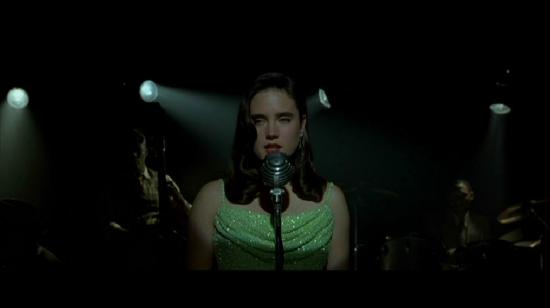
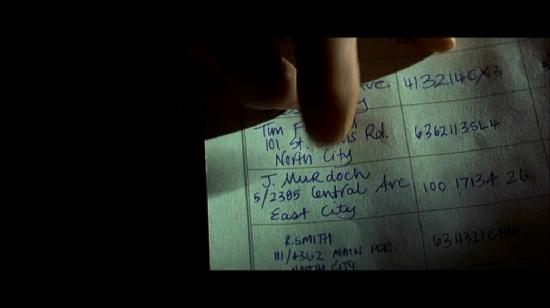
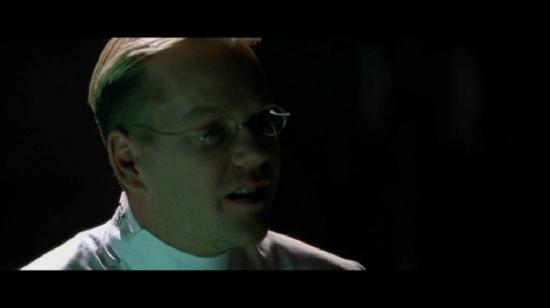
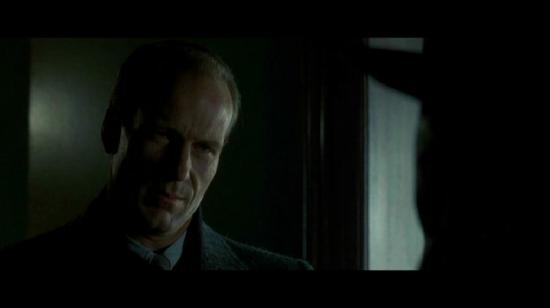
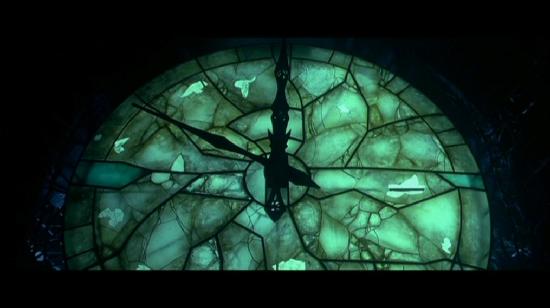

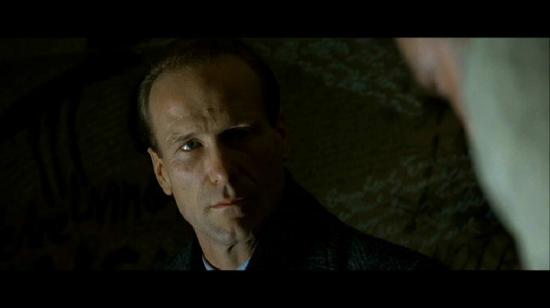
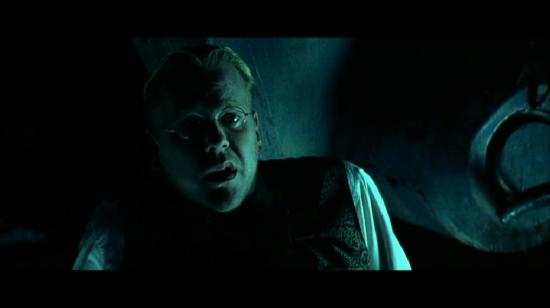
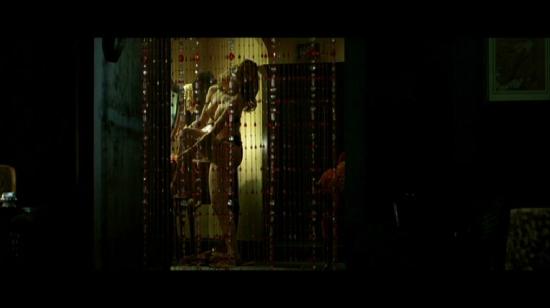
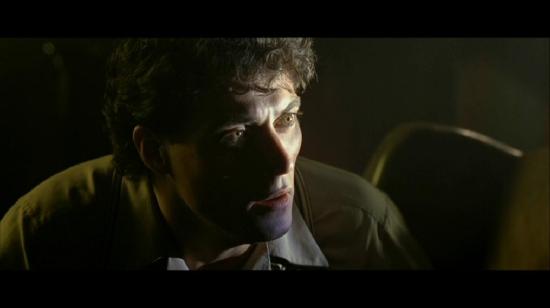
Your Opinions and Comments
Remember seeing this but not quite able to recall it...
I'll get round to reviewing it one of these days, but I don't know when that'll be as there are so many of my own discs I'd like to review in addition to those I'm sent.
I remembered the ending before it got there, but still a fantastic film...